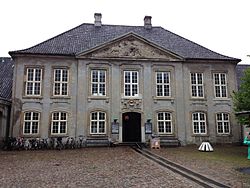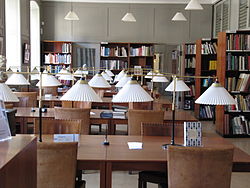Designmuseum Danmark | |
 The facade towards Bredgade | |
 | |
| Established | 1907 |
|---|---|
| Location | 68 Bredgade Copenhagen, Denmark |
| Coordinates | 55°41′10.95″N12°35′36.06″E / 55.6863750°N 12.5933500°E |
| Director | Anne-Louise Sommer |
| Website | designmuseum |




The Designmuseum Denmark (Danish : Designmuseum Danmark) is a museum in Copenhagen for Danish and international design and crafts. It features works of famous Danish designers like Arne Jacobsen, Jacob Jensen and Kaare Klint, who was one of the two architects who remodeled the former Frederiks Hospital (built 1752–57) into a museum in the 1920s. The exhibition also features a variety of Chinese and German porcelain.
Contents
- History
- Library and archives
- Furnitureindex
- Auditorium
- Cultural references
- See also
- References
- External links
The museum was known as the Danish Museum of Art & Design (Danish : Kunstindustrimuseet) until 2011 [1] and known as the Danish Museum of Decorative Art prior.

